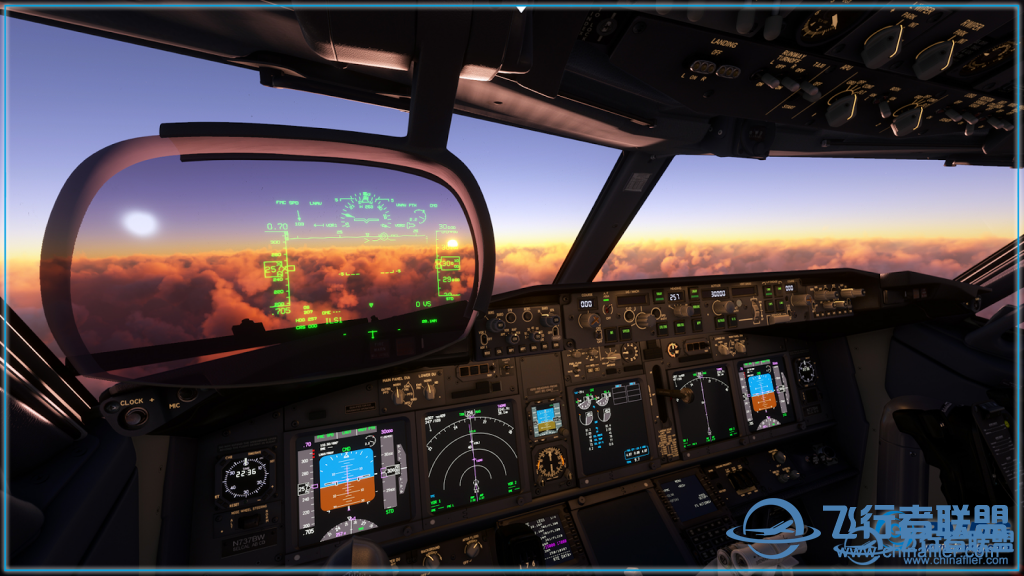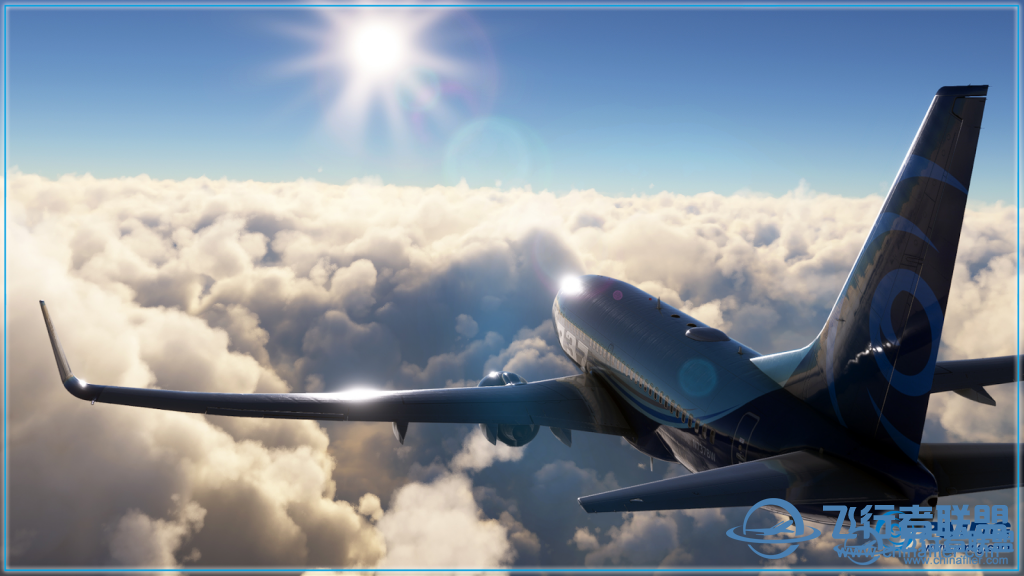|
737 NG3 的消息在 2022 年的大部分时间里不断涌现,因为 PMDG 正准备发布重磅炸弹,团队负责人 Robert Randazzo 再次回到论坛,发布了关于 MSFS 的 737 NG3 进展的另一次迭代天气更新。该公告爆料称,该系列产品现在正在进入 beta 测试,该决定是在上周四做出的,该插件的状态“大部分符合最终产品”。
优先事项保持不变,尽管本周对 3D 进行了进一步的改进,包括 HUD 和 HGS 渲染、视觉模型的缩放调整、阴影模型和地面服务车辆的视觉改进。事物的技术方面包括为在线和离线流量引入 TCAS II v7.2、提高推回准确性以及对设备和硬件的验证工作。有关论坛帖子的细分,请参见此处:
- 对平视引导系统的 3D 模型进行了进一步调整,包括改进组合玻璃技术和定位。
- 缩放所有 3D 模型(包括 VC 和外部模型)的工作、细节和调整。
- 使用在线/离线流量实现和测试 TCAS II v7.2。
- 继续研究阴影模型和纹理
- 验证数百个硬件/设备/功能选项。
- 更新了地面处理设备的模型和纹理。
- 提高了自动后推功能的准确性,包括用户驱动的后推拖拉机。
- 继续进行系统逻辑检查、验证和调整,以解决先前和当前报告的系统逻辑服务报告。
- 客户端安装程序和服务器端安装程序资产的实现。
- 从外部工具(simBrief 等)加载飞行计划以及保存/加载 FMS 生成的飞行计划的功能验证。
Randazzo 详细阐述说,大部分工作都围绕着对飞机进行抛光,该飞机正处于团队已经解决了大多数 msfs 相关问题的阶段,并且现在正在将努力流向“平台-PMDG 问题”,这些问题源于团队对 MSFS 不熟悉。
提供了两个屏幕截图,展示了准直 HUD 和模拟器的图形能力。对于 HUD,Randazzo 宣传它“在白天和夜间模式下都能很好地工作”,并支持通常在飞行中使用的可变调光和飞行模式:

与他们之前的 DC-6 版本一样,照明都是从头开始完成的,以利用 MSFS 的照明系统。第二张图片展示了阳光照射在机身和机翼闪闪发光的金属外壳上时的光晕。从图片中还可以看到反映周围环境的细微折痕:

然后,Randazzo 着手解决有关性能的问题,鉴于开发中使用的飞机和设备无法准确反映最终用户的用例,他提供了不确定的答案。普遍的共识是,性能在很大程度上与其他飞机产品一致。开发版本缺乏优化工作,无法提供可用的 FPS 数字,它包括附加的开发工具,例如调试器。一旦测试人员深入研究了 beta 副本,Randazzo 将能够提供更具体的数字。
Randazzo 还打算通过演示视频跟进这篇文章,以展示准直 HUD 等功能 - 本周是目标,尽管 Randazzo 在这方面是一厢情愿的。NG3 的开发更新到此结束。
原文: News of the 737 NG3 has been pouring in for much of 2022 as PMDG gears up for a blockbuster release with the team’s head Robert Randazzo once again returned to the forums with another iterative weather update on the progression of the 737 NG3 for MSFS. The announcement broke the news that the series of products is now entering beta testing, the decision being made last Thursday with the state of the add-on “mostly conforming to the final product”.
Priorities remain the same, though this week introduces further refinements to the 3D including the HUD and HGS rendering, scaling adjustments across the visual model, shadow models and visual refinements to the ground service vehicles. The technical side of things includes the introduction of TCAS II v7.2 for both online and offline traffic, increased pushback accuracy and validation work on equipment and hardware. See here for the breakdown from the forum post:
- Further adjustments to the 3D model of the Heads Up Guidance System, including improvements in the combiner glass technique and positioning.
- Scale work, detail and adjustments over all of the 3D models, including VC and external models.
- Implementation and testing of TCAS II v7.2 with both online/offline traffic.
- Continued work on shadow models and texturing
- Verification of hundreds of hardware/equipment/functionality options.
- Updated models and textures for ground handling equipment.
- Improved accuracy for automated pushback features, including user-driven pushback tractor.
- Continued system logic checks, verification and adjustment to resolve previously and currently reported system logic service reports.
- Implementation of client side installer and server-side installer assets.
- Functionality verification for flight plan loading from outside tools (simBrief, etc) as well as saving/loading of FMS generated flight plans.
Randazzo elaborated saying that much of the work revolves around polishing the aircraft, which the aircraft is at a stage where the team has addressed most of the msfs related issues and effort is now being streamed into "platform-PMDG issues", issues that stem from the team’s lack of familiarity with MSFS.
Two screenshots were provided, demonstrating the collimated HUD and the graphical prowess of the simulator. For the HUD, Randazzo promoted that it “works well both in daylight and in night modes”, with support for variable dimming and flying modes normally used in flight:
In the same respect as their previous DC-6 release, the lighting was all done from the ground up to take advantage of MSFS’s lighting system. The second image showcases the light flare as the sun shines against the glistening metal skin of the fuselage and wings. Subtle creases reflecting the surrounding environment are also visible from the picture:
Randazzo then moves to address questions raised about the performance, which he provided an indefinite answer given that the aircraft and the equipment used in development wouldn’t accurately reflect the use-cases for the end user. The general consensus is that the performance is largely in line with other aircraft offerings. The development build lacks the optimisation effort which wouldn’t provide usable FPS numbers and it includes development tools attached such as a debugger. Once the testers delves into the beta copy, Randazzo would be able to supply more concrete numbers.
Randazzo also intends to follow up on this post with a demo video, with the intent to showcase features such as the collimated HUD - this week is the goal though Randazzo is wishful in that regard. That wraps up the development update for the NG3.
|